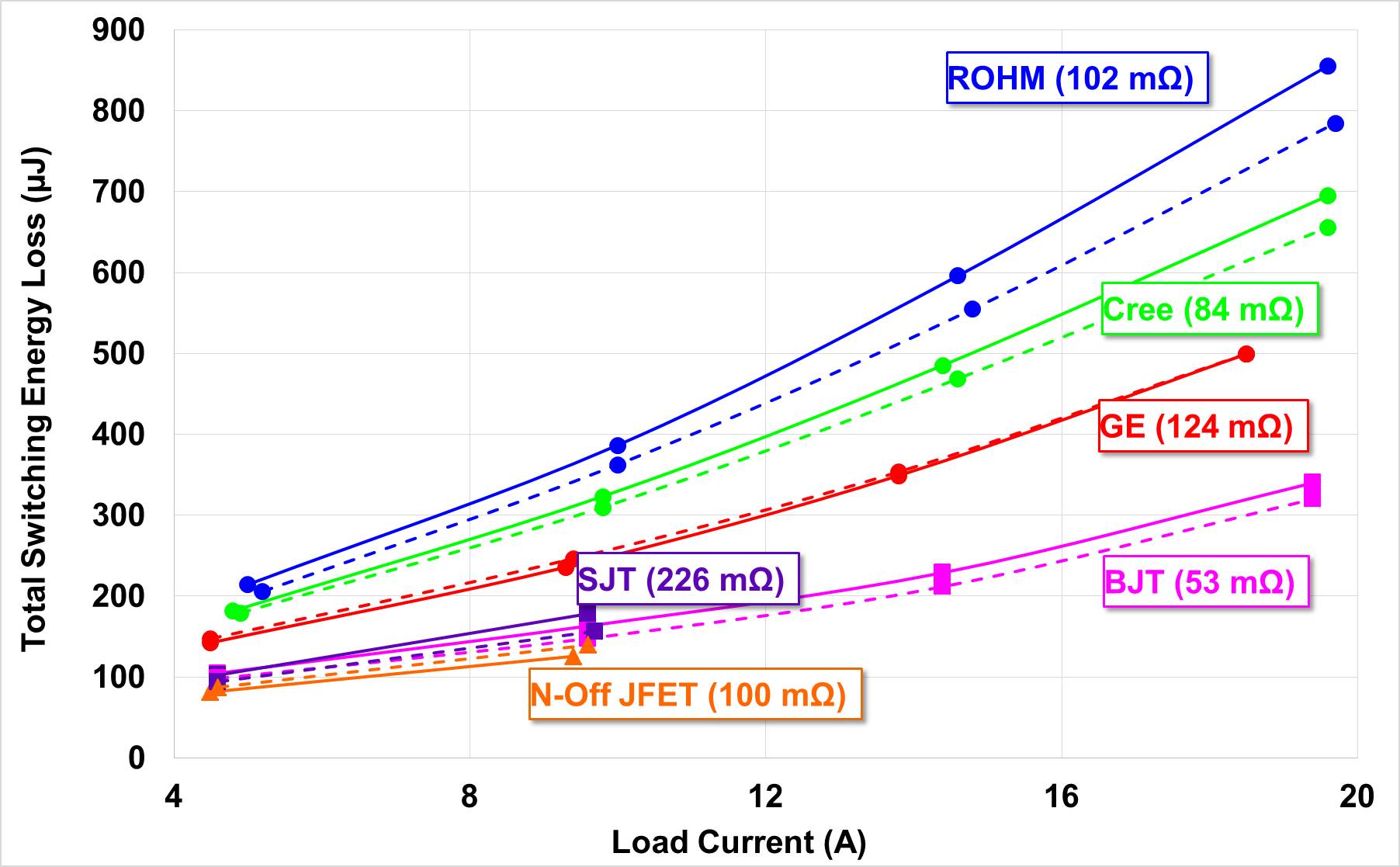RESEARCH
High-Temperature Characterization and Comparison of 1.2 kV SiC Power MOSFETs

The on-resistances of each device were measured using a curve tracer. It is important to look at the specific on-resistances of the devices since for a given breakdown voltage the smaller the die size the larger the resistance. In this case, this figure was obtained by multiplying the measured on-resistance values by their respective die area.
Fig. 1 shows the measured specific on-resistance versus temperature for each of the devices. As seen in this figure, the on-resistance of the SiC normally-off JFET was the most temperature-sensitive. This can be attributed to strong phonon scattering, which reduces the carrier mobility. Moreover, the SiC MOSFETs had the highest specific on-resistances while the BJT had the lowest. It can also be observed that the on-resistance of the BJT was the least temperature-dependent, which indicates constant conduction losses with varying temperature.
The DPTs conducted at high-temperature revealed that the SiC MOSFETs experienced a reduction in turn-on energy, and an increase in turn-off energy with increasing temperatures. The BJT and SJT, on the other hand, showed little change in the total switching loss with increasing temperature. Finally, the total switching loss of the normally-off JFET showed a small increase with temperature, which was accredited to the decreased dv/dt during turn-on.






























































































